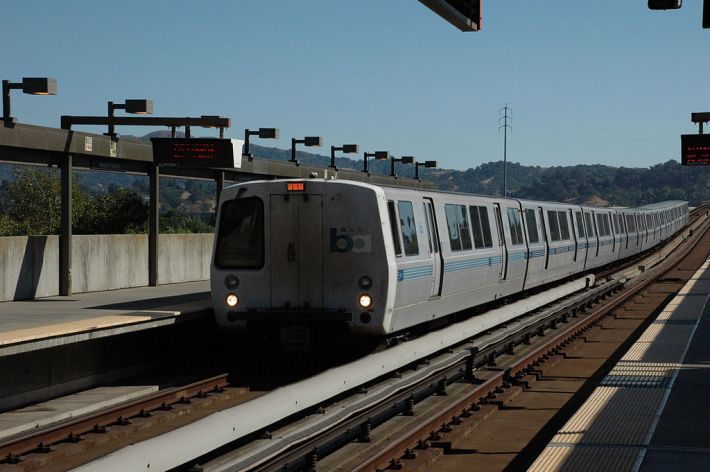
It's been one of the most talked about bond measures ever. And now it's official.
Thursday morning, the BART board voted nine to zero to place the "BART Safety, Reliability, and Traffic Relief Program" bond on the November 8 ballot. Voters will be asked to authorize $3.5 billion in general obligation bonds.
From the BART release:
The bond measure is a key funding component of BART’s plan to rebuild and renew its aging system, which faces increasing problems as various physical parts of the 44-year-old railway reach the end of their useful lives. The plan replaces and repairs 90 miles of deteriorating tracks and other aging infrastructure in order to maintain BART's excellent safety record and protects our environment by keeping thousands of cars off the road.
“This bond measure is practical; it’s dedicated to fixing what we have,” said Board President Tom Radulovich, in an official statement. “We have a responsibility to keep our system safe and reliable while getting the maximum value out of taxpayers’ investment.”
90 percent of the investment will go to repairing and replacing critical safety infrastructure. 10 percent will go towards relieving crowding, reducing traffic congestion, and expanding access to the stations. A little more on that 10 percent later.
Some of the specific estimated breakdowns are as follows:
- Renew Track - $625 million
- Renew Power Infrastructure - $1,225 million
- Renew Tunnels and Structures - $570 million
- Replace Train Control and other Infrastructure to Increase Train Capacity - $400 million
A BART statement was stark about what happens if the bond is not presented to the voters and, presumably, what will happen if it fails to clear the two-thirds threshold it needs to pass: "BART will not have sufficient funding in the foreseeable future to undertake renovation of critical infrastructure."
Or as Nick Josefowitz of the BART Board of Directors has said previously to Streetsblog: "BART stands at the edge of a precipice. BART riders and the Bay Area as a whole cannot afford [to spend] another decade relying on its aging and inefficient systems built in the 1960s. Without meaningful investment now, ever slower and less reliable transportation will hold back the development of our region and the ability for each Bay Resident to thrive. The time has come to rebuild BART from the ground up."
Stuart Cohen, executive director of the transit activist group Transform, told KQED radio that he believes it will increase the system’s reliability. “We all know that when BART stops, the Bay Area stops as well...We’re squished like sardines,” he said to the Bay Area's NPR-affiliate, “and we’re just about to get to that place that Washington, D.C.’s Metro is, where they’re now having frequent meltdowns.”
He's referring to breakdowns and persistent electrical issues on BART and on the DC Metro, which is about the same age as BART and recently suffered very serious breakdowns due to deferred maintenance.
If that happened with BART, Josefowitz said in another previous Streetsblog story, it would devastate the Bay Area economy. “We can’t get into that type of situation,” he said.
At the same time, it's somewhat disappointing that a second Transbay Tube will get studied, but funding is not included to start building it. But with its estimated $13 billion projected price tag, that just wasn't in the cards: it's going to take a major political change and a cash infusion from Washington to get it built.
“This conversation has been going on for a very long time; often it’s been in the domain of hobbyists and advocates,” said Ratna Amin, Transportation Policy Director for SPUR, in a presentation last April about the possibility of a second BART Transbay tube. “Now is the time to move the idea of a second BART tube into the realm of a real project.” And that's where the aforementioned cash towards "relieving overcrowding and traffic congestion" comes in. At least some of it, if not most, will go towards studies and preparation for that second Transbay tube.
That is, if the bond passes this November.





